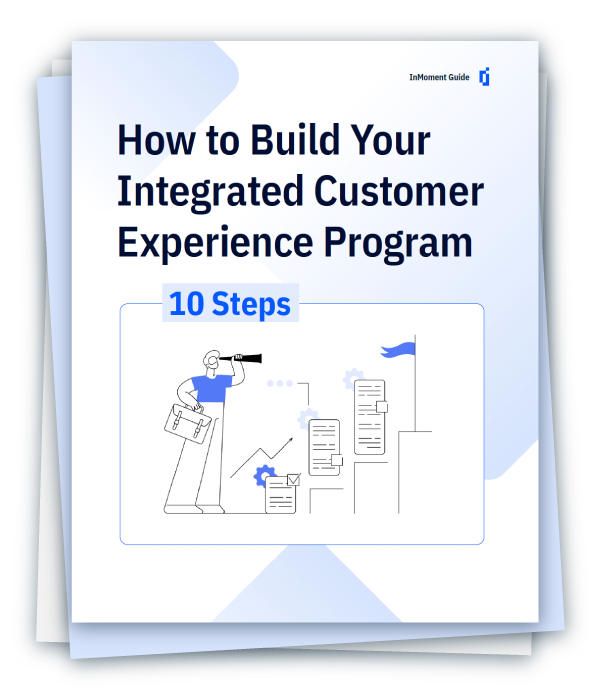The Employee Experience Maturity Path: How Does EX Improvement Impact Customer Behavior?

This article was originally posted on CustomerThink.com
Sacagawea, a knowledgeable young Shoshone woman, successfully guided Lewis & Clark through the Louisiana Purchase territory, all the way to the Pacific Ocean. Tenzing Norgay, a Sherpa, whose backyard was the Himalayas, successfully guided Edmund Hillary on the first successful ascent of Mount Everest. Ports around the world have skilled and experienced pilots whose detailed knowledge and map-memory of local shoals, sandbars and currents is essential to guide arriving ships to their berths.
In the modern era, Tim Berners-Lee was the trailblazer of computer science—the inventor and mapmaker of the World Wide Web and HTML—without whom we simply wouldn’t have the internet of today. And then there’s Steve Wozniak, the technical pathfinder behind the initial system for Apple products and services. Every successful journey greatly benefits from having a reliable, capable, amply proven guide, especially one using a detailed, user-friendly map with signposts to mark steps needed to reach the intended goal. It is as true with employee experience (EX) improvement. There is a clear path to greater employee experience maturity and employee insights success, with a map and signposts to aid the guide.
4 Signposts on the Employee Experience Maturity Path Map
There are four distinctive signposts which serve as a guide up the employee experience maturity path, each one bringing organizations closer to their goal of optimal employee behavior and value as enterprise assets. These signposts, or markers, represent the points along the path, or the trajectory, employee experience has taken, as companies become more mature in a) how they consider employee contribution, in other words the importance attached to it, and b) what role, or roles, employees have in enterprise culture, strategy, and business outcomes.
#1: Employee Satisfaction
The enterprise EX improvement and insights journey path often begins with very basic employee satisfaction, as companies are principally looking to manage and measure behavior at a macro level. For the employee experience maturity trajectory, it is the point of embarkation. Employee satisfaction will typically include job-related factors like compensation, workload, perceptions of management and leadership, flexibility, teamwork, resource availability, etc.
#2: Employee Engagement
The next, and first real, EX journey signpost brings many organizations to employee engagement. Engaged employees have a stronger sense of purpose within the organization. Here, the predominant, HR-formed, construct is to consider employees as costs of doing the company’s business, and the overall objective is for their fit, utility, and productivity within the enterprise.
#3: Employee Commitment
This signpost represents and recognizes arrival on the path of a deeper awareness of what creates and shapes the full EX landscape: employee commitment to the organization, to its product and service value proposition ,and customers – and plan to optimize business outcomes and stakeholder value. Part of this more progressive awareness is also understanding, and mitigating, things which can impede EX success. Employee fit, utility, and productivity are certainly important, but they are insufficient where real employee experience and linkage to customer value delivery are concerned. Organizations need to have more contemporary and actionable insight into what motivates employees, connects them to the culture and customers, and drives their behavior as invested, highly contributory enterprise assets.
#4: Employee Advocacy
This signpost has the EX parallel of the flag planted at the top of a mountain peak. Few organizations are able to reach this terminus point on the path (although it is certainly within reach, with strategic focus and discipline, for virtually any company). Companies with high rates of employee advocacy, and its accompanying strong set of business outcomes, are those which have embedded commitment and customer focus into the enterprise DNA, and where the culture, operations, and processes all flow through stakeholder value creation.
How Does EX Improvement Impact Customer Behavior?
In looking at the progression from satisfaction to engagement to commitment and advocacy, we have examined research conducted over the past three decades. What we have observed are studies that examined some contributing factors of employee experience and value, such as reward and recognition, job fit, training, career opportunities, work environment, and departmental and management relationships. But the critical component often totally missing, or lightly addressed, from all of this material is the definitive linkage and commitment to customers.
Tony Hsieh, the late founder and CEO of Zappos, said: “The brand is just a lagging indicator of the company’s culture.” He hit the mark with that statement. Brand image needs to be complemented and supported by a culture and set of processes dedicated to both employee and customer experience. That brand promise has to be delivered for customers every time they interact with the company. Contribution to customer experience also needs to be fully, and strategically, baked into the organization and into every employee’s job description.
Consider how frequently your customers come in contact with your employees, either directly or indirectly. Whether it is through a computer screen in a customer service chat, on the telephone, or in person, every employee, whether customer-facing or not, should be an enthusiastic and committed representative for the brand. If, today, employee satisfaction and employee engagement are not designed to meet this critical objective of the customer experience, almost inevitably there will be a sub-optimal downstream result with regard to customer behavior.
The Importance of Creating a Culture of Commitment
In any group of employees, irrespective of whether it’s a service department, technical and operational division, or a branch office, there will be differing levels of commitment to the employer’s brand and the company itself, its value proposition, and its customers. If employees are negative to the point of undermining, and even sabotaging, customer experience value, they will actively work against business goals and outcomes. However, if employees are advocates, and whether they interact with customers directly, indirectly, or even not at all, they will better service and support customers.
For companies to create and sustain higher levels of employee advocacy, it’s also essential that the employee experience be given as much emphasis as the customer experience. If employee commitment and advocacy are to flourish, there must be value, and a sense of shared purpose, for the employee (as well as the company and customer) – in the form of recognition, reward(financial and training), and career opportunities. Combined with advanced analytics and other employee-related data, the advocacy concept can lead and enable any organization to be more stakeholder-centric, flexible, dynamic, and financially successful.
This is a clear path and map to EX maturity. Where is your company on the journey?


